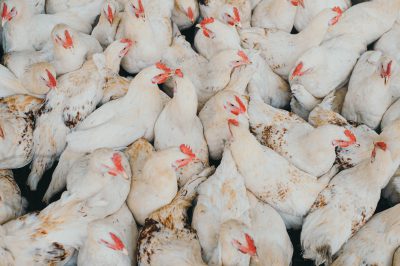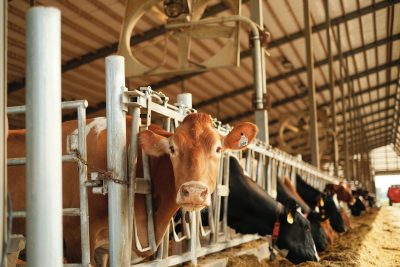Chickens are the most farmed animal on Earth and suffer unimaginably at the hands of humans. 99.9 percent of broiler chickens (those destined to be slaughtered for meat) live out their lives in miserable conditions inside chicken factories, and 98.2 percent of egg-laying hens are confined in tiny cages, also inside factory farms.
Humans have taken a unique and intelligent species and turned them into a farmed commodity, all in the name of profits. We have removed any possibility of a natural existence for these animals—broiler chickens will be packed into warehouses alongside thousands of other birds, where they suffer awful infections, broken limbs, swollen joints, lameness, and heart disorders, and may never see daylight. Egg-laying hens, if born female, will spend their whole life in a cage no bigger than a sheet of printer paper, forced to repeatedly lay eggs until their bodies are spent and they are discarded. If male, they are killed at birth.
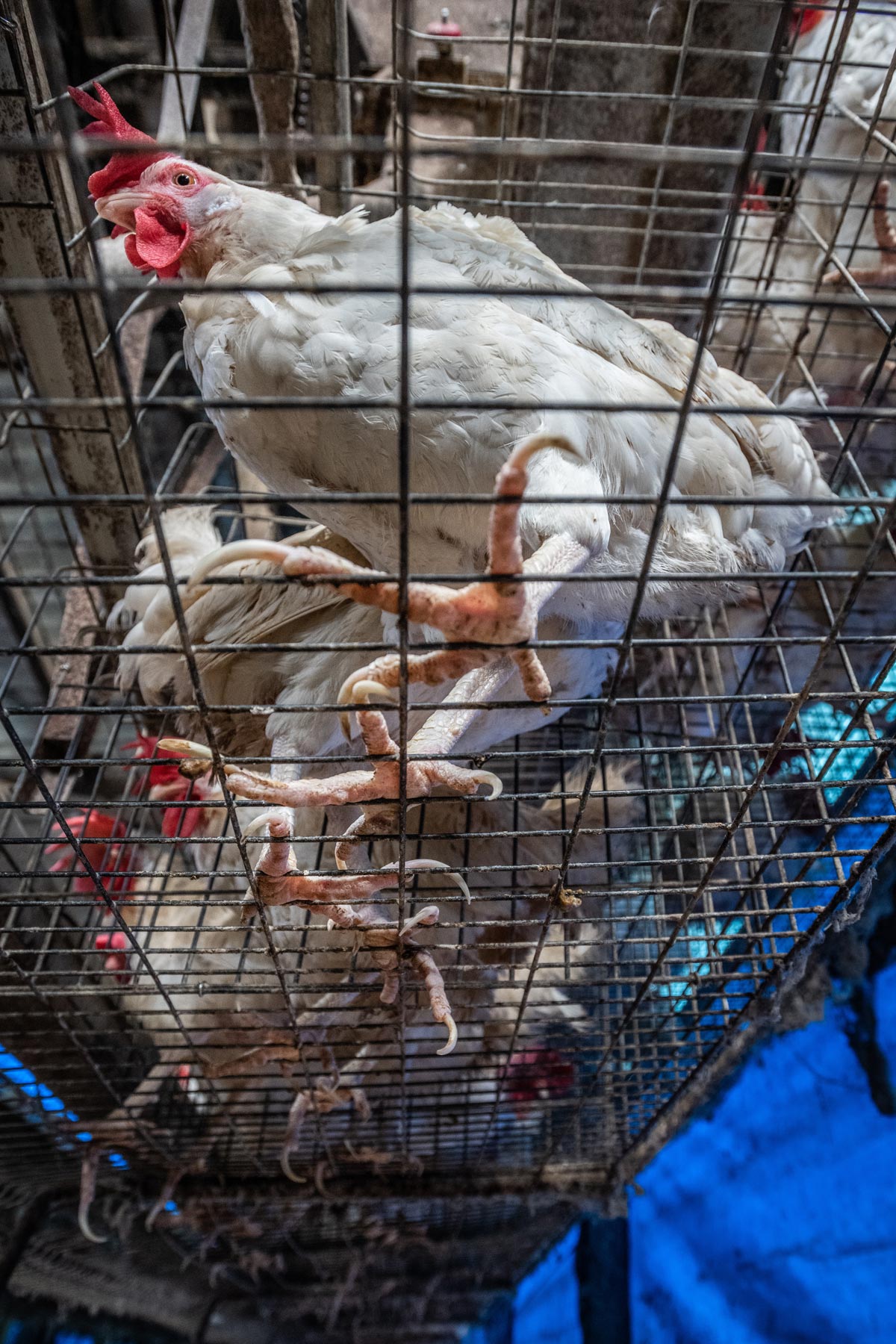
This is how 99 percent of chickens in the US are forced to live and it’s time for change.
Is Chicken Made In Factories?
Chickens are raised in factories, until they reach “market-weight,” or in other words, until they are large enough to be profitable at slaughter. They will spend their last days being loaded into crates— a traumatic and painful experience—and transported, often over long distances, to a slaughterhouse. Once there, surrounded by the sounds, smells, and sights of death, they too are killed, and their flesh is processed into meat products.
How Long Do Chickens Live In Factories?
Industrial agriculture has genetically bred these poor birds to grow much faster than is natural. A chicken’s natural lifespan is around six years, yet factory-farmed birds live no longer than six weeks. In this time, their bodies balloon, often resulting in broken legs and heart attacks as their bodies are unable to support this unnatural growth.
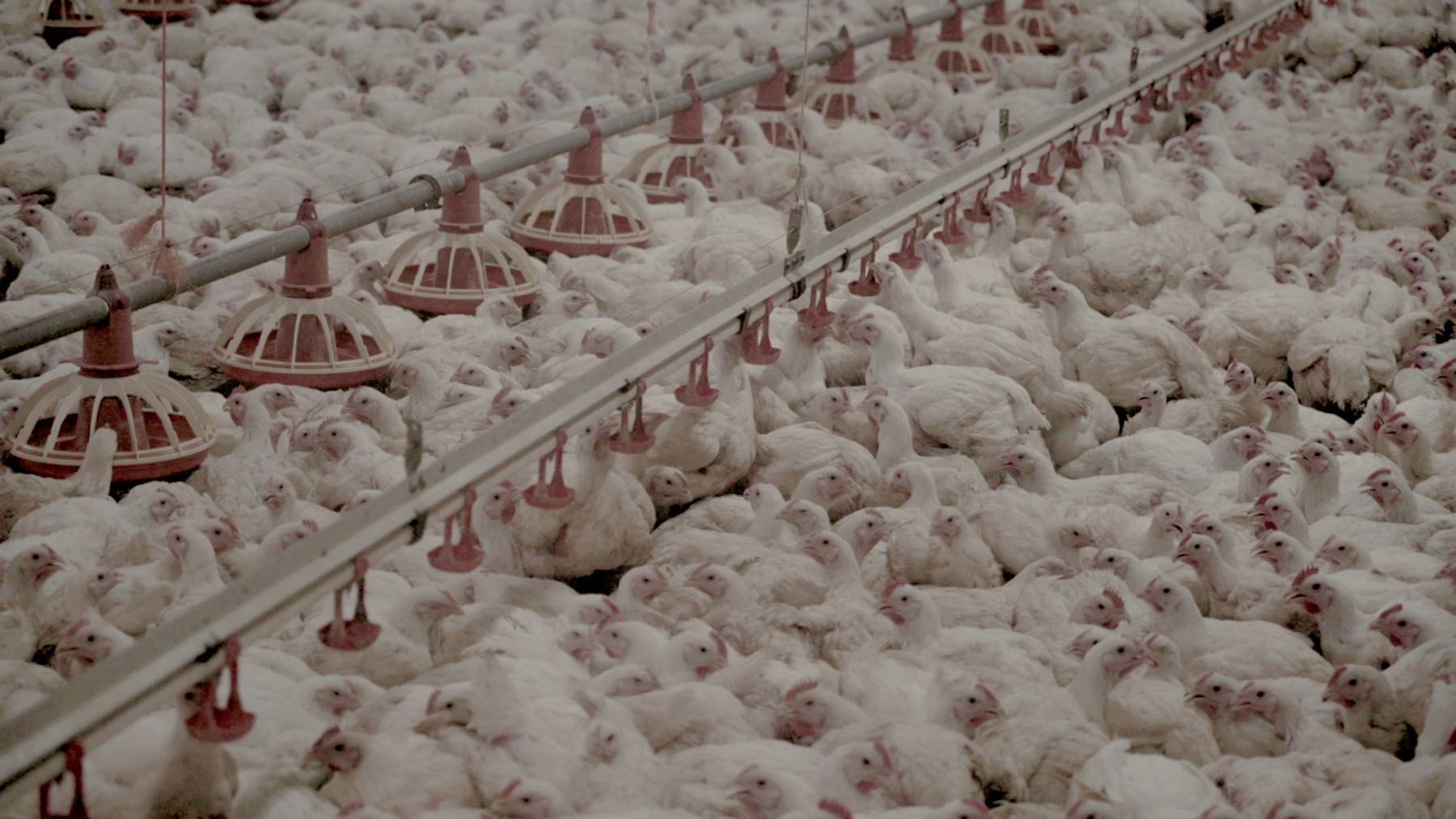
What Are Chickens Fed On Factories?
Chickens on factory farms in the US are fed corn, soybean, or another grain-based feed, all crops that are perfectly nutritious and edible for humans. These crops are grown on thousands of acres of farmland, often deforested land in Central and South America. Tyson Foods, one of the largest meat producers in the US, uses around 10 million hectares of land for growing feed—an area twice the size of New Jersey. This land could be used to grow food to be consumed by humans. And because it takes 3.3kg of feed to produce just 1kg of chicken, huge amounts of crops are simply wasted when we feed them to animals. If we made those crops available to people instead, we could feed just as many people on less land, and that means we could return large amounts to nature. Rewilding farmland would be great for the planet, the climate, biodiversity, wild animals, and people!
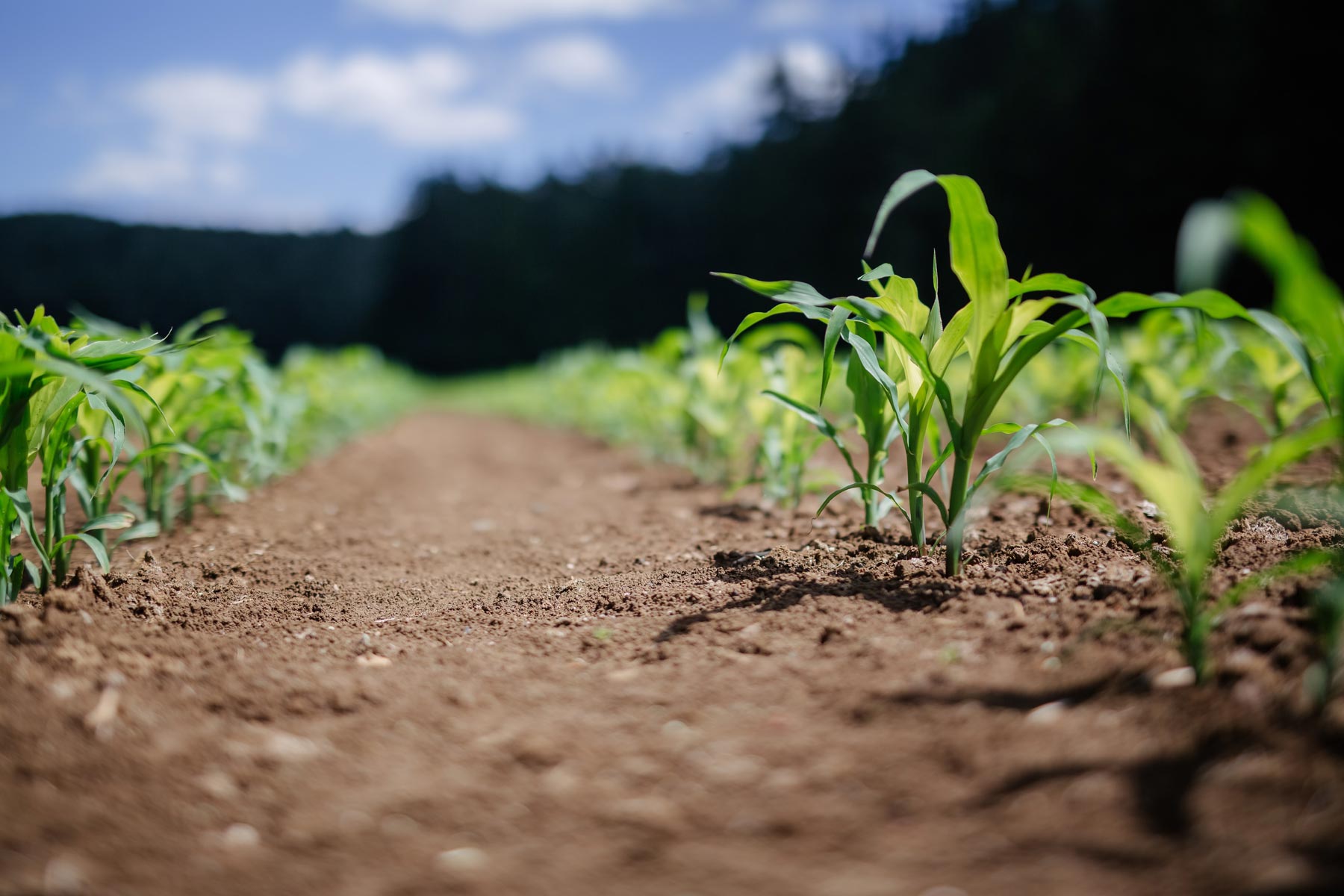
Soy is often criticized due to its links to deforestation and as a result, soy products are negatively viewed when it comes to climate impact. More than 75 percent of soy grown in the world however is used to feed farmed animals, so in actual fact, eating chicken, not soy products is by far the biggest problem.
How Are Chickens Killed In Factories?
Male chickens unlucky enough to be born into an egg factory farm are slaughtered within minutes of being born, usually by being minced in a macerator or gassed. Females suffer an arguably worse fate, as they live out their short lives in tiny cages, with no room to express any of their natural behaviors. Many will die of infection or exhaustion from the constant egg- laying, and some will even die from injuries caused by neighboring hens, who have been driven to violence by the stress and frustration of imprisonment.
Broiler chickens, the poor birds destined for our plates, are driven to slaughterhouses in crates on the back of trucks. It is increasingly common for birds to be gassed to death, but traditionally, birds are hung upside down in metal shackles, dragged through electrified water to stun them (which is often unsuccessful), and have their throats cut by an automated knife. As throat-cutting is not always effective, birds often bleed to death slowly and painfully, and as stunning is also often ineffective, many birds will have their throats slit whilst fully conscious. This process is inhumane, bloody, and barbaric.
How Is Chicken Processed In A Factory?
Once a bird has reached a profitable size, he or she will be processed into the meat products we see on supermarket shelves, something far removed from the living animal whose body it is. Nothing on the pack reveals the pain, distress, and suffering inherent in turning a living, breathing being into a piece of meat.
The process is as follows:
- The birds will be caught by ”chicken catchers”, thrown into crates, and transported to a slaughterhouse. Factory farm workers are often wildly desensitized and will sometimes go as far as abusing the animals if they make attempts to evade capture.
- Once on the back of a truck, surrounded by thousands of other terrified birds, they make an often long, cold, and dark journey to the slaughterhouse.
- On arrival, they are transported in their crates to either the gas chamber or to the slaughter line, where they are hung in shackles, and dragged through electrified water before their throats are slit.
- After having their feathers removed, in many cases, the birds’ carcasses are then dipped in a chlorine solution, to treat the high levels of dangerous bacteria present, a direct result of the awful hygiene and welfare on the factory farm they came from.
- Their flesh is then inspected before their bodies are broken up into different “products.” Every effort is made to remove any sign that this meat product was ever a sentient, living being.
- The flesh is then packaged in plastic, chilled, and shipped to stores.
This process is designed to make the mass slaughter of these animals as efficient and as profitable as possible. The meat industry will claim that they practice “humane slaughter,” that reduces suffering, but the treatment of animals in farms and slaughterhouses is anything but humane.
Conclusion
Chickens unfortunate to be born into the factory farming system, endure nothing but suffering during their short lives. The meat industry makes claims of “heightened welfare” and “humane slaughter” but the fact is, factory farms will always prioritize profit over welfare, and these intelligent, sentient animals will continue to suffer until we stop eating their flesh.
By going vegan, you are doing your part to stop these awful practices, saving the lives of countless animals and doing your own health and the health of the planet a huge favor. What is there to lose?
